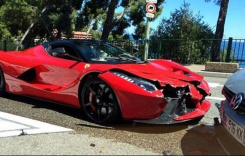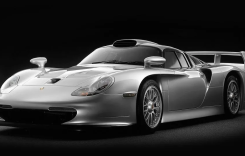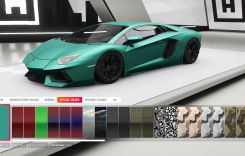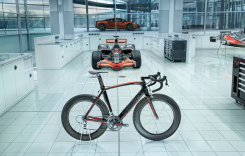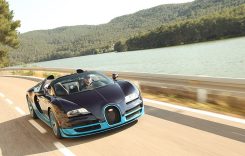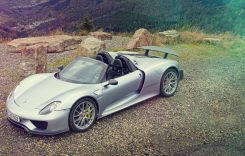Since it was introduced in 2008, KTM’s RC8 continues to prove there is more than one way to build a V-Twin Superbike. This year the 2011 KTM RC8R features a variety of specific engine and chassis tweaks to go along with a reduced MSRP of $16,499, all of which combine to make it more competitive on the track, street and the showroom.

Hop into the firm-feeling seat and the RC8R feels much more-narrow than the Inline Fours. Its common knowledge that most sport bikes have an aggressive, track-focused riding position but in the case of the RC8R it is the most relaxed of the group plus it offers adjustable seat height, foot pegs and bars. This is a huge selling point for KTM as the best the rest of the field offers are adjustable pegs. The seat height ranges from 31.7 inches at its lowest setting (which we ran exclusively in this test) to 32.5 inches. Even our tallest 6’3” test rider reported that he was comfortable. We deem the RC8R has the most rider-friendly and well-thought out rider interface in this test. The way the seat and tail section are shaped lock the rider in place and help keep riders from moving around too much. We do wish the windscreen was a bit taller and that the rear view mirrors offered a better view, but overall this is the most comfortable street bike in the shootout.
“If you’ve got long legs it’s the bike for you,” comments Dawes. “The seat is as hard as a rock. But I don’t care. I could ride it all-day. The spacious seat-to-footpeg relationship is different—but good. The way in which you sit on the bike gives you confidence because you actually feel more a part of it when you’re riding.”
(Above) Aesthetically you won’t find a better looking bike than the ’11 KTM RC8R. (Below) With its new pricing the KTM RC8R is now a serious threat to the Ducati 1198.
The RC8R has a digital LCD dash that feeds information to the rider in an aesthetically pleasing and intelligent manner. With a load of info including bar tach across the top of the screen, speedo, lap-timer and a clock among other things, there is a lot of data to keep track of. Despite all this great info at your disposal, for some reason it does not have a fuel gauge, just a low-fuel warning light. Unlike the R1, ZX-10R and GSX-R1000 the RC8R does not offer multi-function power settings, nor does it have the latest Traction Control technology found on the S1000RR, 1198 or the new Ninja. The benefits of having TC, ABS or other safety features could have helped the KTM score higher in a few areas but at the same time, we really like riding it.
Pull out of the parking lot and it’s obvious the KTM is one of the lighter bikes in the test. With its 4.35-gallon fuel tank topped of it tips the scales at 449 pounds, that’s 10 pounds heavier than the class-leading Kawi and six more than the second-lightest Ducati and Honda. However, its mass is distributed well and hangs low in the bike’s CG which makes the RC8R feel lighter than what our scales proved. With the exhaust routed below the engine it keeps additional weight low to the ground and that translates to its light feel.
Accelerating from a stop is less complicated as compared to the Ducati. First gear is shorter and its 17/37 final drive combined with excellent low-end power makes the KTM easy to launch. It finished mid-pack in our quarter mile runs with an impressive 10.29 at 141 mph but that is hauling serious ass, especially for a V-Twin. Feel from the conventional wet-style clutch still feels somewhat vague compared to some of the other bikes, otherwise it might have shaved a couple hundredths off its best ET, but the hydraulic-assisted clutch lever pull is very light. What the RC8R lacks is a slipper clutch, so the rear wheel tends to chatter and hop during aggressive corner-entry and in similar fashion as the Ducati, the KTM’s gearbox feels more loose than the Inline-Fours do. Its 6-speed transmission even popped out of gear on a couple of our riders, hence the low mark in the Drivetrain category.
Once the power does arrive at the rear wheel the RC8R is a force to be reckoned with. Upwards of 70 lb-ft of torque is at the rider disposal from as low as 4500 rpms which gives the KTM the distinction of having one of the highest bottom-end power figures in this test. Keep the throttle pegged and its 86.13 lb-ft of peak torque arrives at 7000 rpm, only a few revs down on the class-leading Ducati 1198. In terms of horsepower the KTM RC8R ranked fifth again, registering 152.41 hp at 10,200 revs, just slightly ahead of the R1 and 1198 and only a half horsepower behind the CBR1000RR and four off the GSX-R1000. Only the 156 horsepower Ninja ZX-10R and 183 horsepower S1000RR are significantly more powerful on our Dynojet 250i.
Despite posting favorable numbers on the dyno the RC8R didn’t blow many doors off on the way to posting the fifth fastest zero-to-60 time of 3.05 seconds. For the record that is 0.35 seconds behind the class-leading BMW. It also ran through the quarter mile with the fifth fastest time of 10.29 seconds at 141.7 mph, which put it ahead of both the Ducati and Yamaha and within less than a tenth of a second behind the ZX-10R. As with all the bikes below the median times, the RC8R still put up very respectable quarter-mile runs. Analyzing the runs reveals that the launch cost it time from the dead stop which was made up in the middle of the track.
“The RC8R’s powerband seems to be tuned for my style of riding,” voices Gauger. “It has a lot of power down low so I never really have to spin the engine at high rpm to get it moving. I prefer to short-shift and use the bike’s torque rather than screaming it like you would on the Japanese bikes or the BMW.”
From front-to-back the KTM RC8R is a real stunner. The RC8R has the stronges bottom-end engine performance in this test.
Just like the Yamaha and Ducati the KTM has an appetite for fuel. We calculated an average of 30.4 mpg between fill-ups which in turn equates to a range of roughly 131 miles which gives it the second worst mpg and range based on the capacity of its 4.35 gallon tank. As a daily commuter or track day bike it isn’t that big of a deal to net that fuel mileage but it will not go as far as the miserly Honda, which netted a 36.7 mpg average and a range of almost 160 miles. On the flip side, it is slightly more efficient than the R1 which ranked last with an average of 28.6 mpg. If you’re looking for fuel economy the RC8R is not going to be high on your list.
Continuing with the EPA-theme, despite not sounding irritatingly loud at idle, the 90 decibel exhaust note belted from its muffler proved to be the loudest. Add in some rpm and the KTM’s engine sings to a tune of 101 dB which ties it with the Ducati for loudest exhaust note. If you plan on riding the bike at any Laguna Seca trackdays, odds are you will get caught by their ultra-low sound requirements. So, there’s the good the bad and the ugly side of the 2011 KTM RC8R.
The Austrian Twin has amazing character, including awesome and very unique styling. Its 75-degree V-twin engine churns out impressive numbers and emits comparable level of engine vibration as the Italian L-Twin. It sounds similar but we found it doesn’t come across as quite as tough, with a more muffled exhaust note despite what the measured sound test results reveal.
On the open road with its exhaust growling beneath your feet, the RC8R delivers a high-level of agility to go along with its entertaining engine. It doesn’t’ require the same amount of muscle to change directions as the Ducati or Yamaha and is a fairly easy motorcycle to ride. Its suspension settings are more aggressive than some of the other bikes, which will be welcome by those looking to push the limits in your weekend carving sessions. Overall the RC8R ride quality has improved quite a bit compared to years past, but it still doesn’t glide over the pavement as well as the Japanese bikes or the BMW for that matter.
“The handling really surprised me,” said Steeves. “I thought it steered much easier than the Ducati and even the Suzuki. The suspension was a little stiff but the fork on the KTM worked best for me and was really obvious when you were doing nose wheelies.”
Speaking of endos, the KTM’s brakes are well reviewed by our testers. It shares the same high-end monobloc Brembo set-up as the 1198 but initial bite wasn’t as sharp, which could be good or bad depending on preference. Of course, there was no issue with outright power on the front stoppers, though the rear brake didn’t seem to be strong enough. In the panic braking test, which really is the basis for judging the combination of front and rear brakes, the KTM recorded a very respectable stopping distance of 135 feet, placing it third, a mere foot behind the runner-up CBR1000RR.
Year after year KTM’s sexy RC8R continues to improve and this latest edition was well received by our test riders. It received top marks in the Appearance and Rider Interface
The KTM RC8R chassis delivers a high-level of feel when blasting through corners, which is key for a good Superbike.
categories which reflects that our cross section of the riding public find it to be a comfortable and good looking superbike. The problem is that it scored low in many other categories and didn’t post hard performance numbers on the dyno or the drag strip. Don’t get us wrong though, because the RC8R is fast becoming a favorite among our editorial team. However, when it comes to our Superbike Smackdown the outright performance counts for a lot and as impressive as it is as a stand-alone sport bike it was ultimately held back by a few horsepower on the dyno, a few tenths on the strip and a few subjective scores from our team. Could it rank higher? You bet. Should it be ranked better? I’m sure some folks will feel that way. When the dust settled though, the 2011 KTM RC8R has to be content with earning fifth place and taking the honor of top Twin of our Street test.

